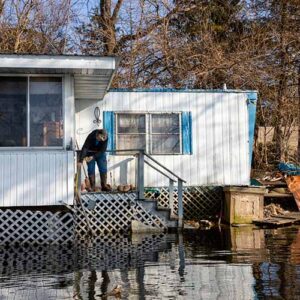The WICCI Human Health Working Group works to ensure that Wisconsin is knowledgeable about and prepared for the human health impacts of climate change. We use WICCI Wisconsin specific downscaled data to ensure that our tools and resources contain the best available information.
We work on systems, policy, and environmental change to create more impactful, lasting climate- and health-related strategies. We create new tools and resources to continue to better understand the human health burden of climate change in Wisconsin. We enact the Wisconsin Idea, bridging the university with the state and the people of Wisconsin.
Summary of Issues and Impacts
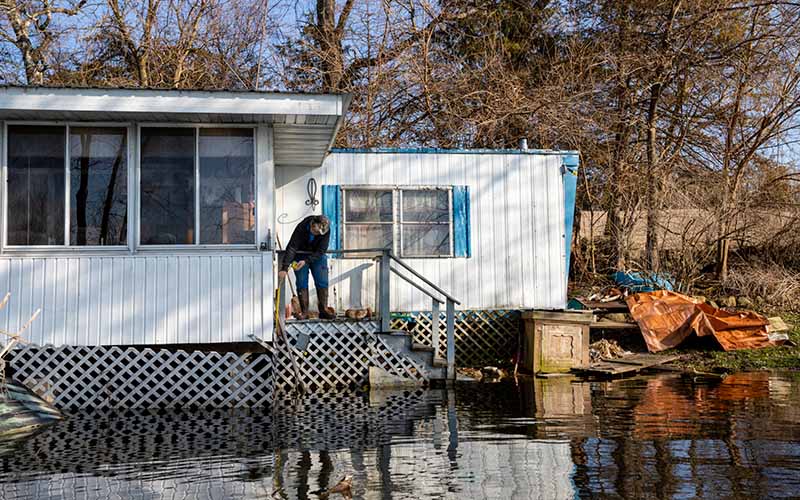
Climate impacts pose regional and local health risks in Wisconsin and will severely impact at-risk populations by causing death from illness, extreme heat, floods, impaired air quality, the spread of disease, or increased exposure to pollution.
The health impacts of climate change are not felt equally by all. Groups more at-risk include communities of color, children and pregnant women, the elderly, immigrant groups, Tribal nations, certain occupational groups, lower income households, and persons living with disabilities or chronic diseases.
When considering climate policy to protect the health of Wisconsin communities, it is imperative that strategies address historical injustices and not exacerbate already existing health equity issues.
Extreme Precipitation Events
Extreme precipitation events have markedly increased in Wisconsin over the last decade. These events are projected to become more frequent by mid-century as a result of climate change, with very extreme rainfalls seeing the largest change. The health impacts of flooding are numerous and include injuries, carbon monoxide poisoning, and drowning.
Flood events can produce increases in bacterial and viral infections and waterborne outbreaks among customers of municipal drinking water systems and recreational users of lakes and rivers. Contamination of surface water with phosphorous and nitrogen may lead to blooms of toxin-producing blue-green algae that can pose a risk to residents, visitors, and their pets.
Extreme Heat
Average annual temperatures in Wisconsin could increase by 2.5–7.5 degrees Fahrenheit by 2055. Extreme heat is associated with increased morbidity and mortality. Certain populations, especially the elderly and socially isolated individuals, are at increased risk of heat-related death. Air quality degradation due to heat may lead to respiratory distress, and additional airborne pollen may lead to increased asthma exacerbations and other allergic episodes.
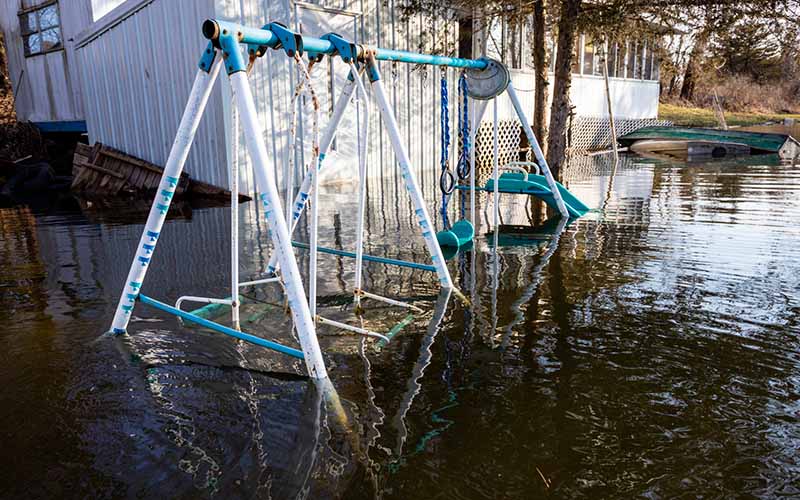
Impaired Air Quality
Rising temperatures and changing climatic conditions in Wisconsin are expected to create conditions favorable for the creation of air pollutants and seasonal increases in pollen that adversely affect health.
Ground-Level Ozone
Climate change creates conditions, including heat and stagnant air, which increases the risk of unhealthy ozone levels forming. High ozone levels affect people with lung diseases, children, older adults, persons who work outdoors, and other at-risk populations by causing immediate breathing problems, cardiovascular harm, and premature death.
Particulate Matter
Hotter temperatures and lack of rainfall increase the risk of drought, dust storms, and wildfires, all of which create particle pollution. Larger particles can irritate eyes, nose and throats, and fine particles can get deep into parts of people’s lungs or even in the bloodstream, causing trouble breathing, lung cancer, low birth weight, heart problems, and premature death. People with heart or lung diseases, children, and older adults are the most likely to be affected by particle pollution exposure.
Pollen and Allergens
The increased length and severity of the pollen season is leading to potential health consequences for those already affected by allergies and asthma. The increasing amount of pollen may have a greater effect on children, who tend to be more vulnerable to ambient pollen. Moisture from increased rainfall and floods can also lead to increased mold growth that worsens allergies and causes asthma exacerbations.
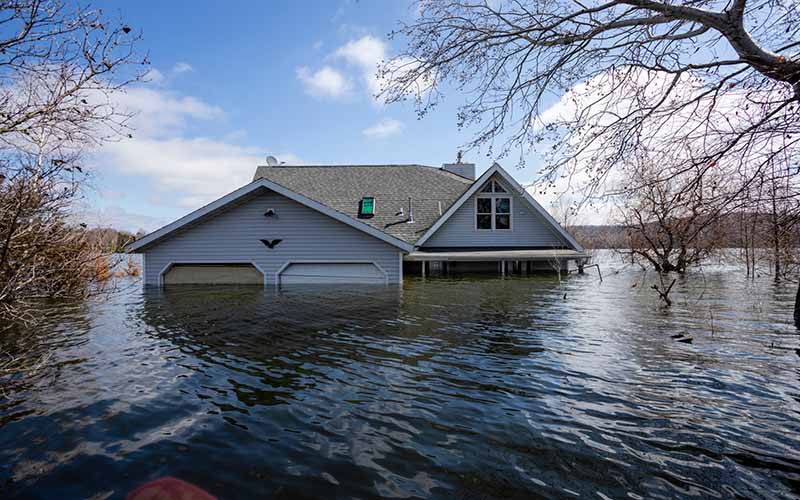
Disease Vectors
A warmer, wetter climate could create more favorable conditions from human cases of West Nile virus, carried by mosquitoes, and Lyme disease carried by deer ticks. Changing environmental conditions may also support new mosquito-borne diseases in Wisconsin, and a northward shift in the range of the lone star tick and associated tick borne diseases into Wisconsin.
Whether a changing climate in Wisconsin will increase the chances of domestically acquiring diseases is uncertain due to vector-control efforts and lifestyle factors, such as time spent indoors, that reduce human-insect contact. Infectious disease transmission is sensitive to local, small-scale differences in weather, human modification of the landscape, the diversity of animal hosts, and human behavior that affects vector-human contact, among other factors.
Finer-scale, long-term studies are needed to help quantify the relationships among weather variables, vector range, and vector-borne pathogen occurrence; the consequences of shifting distributions of vectors and pathogens; and the impacts on human behavior.
Recommended Solutions/Strategies
These recommended solutions are based on the Governor’s Task Force on Climate Change Report. This list is not exhaustive and will be updated as more becomes known. Both climate justice and environmental justice recommendations need to also address health equity concerns.
This is an accordion element with a series of buttons that open and close related content panels.
Create an Office of Environmental Justice
Action: Create an Office of Environmental Justice (EJ) tasked with collaborating across state agencies and engaging a wide range of partners to design climate policies that reduce emissions and pollutants and address the cumulative and deadly impacts of their concentration within these communities.
Impact: This office would be influencing and advocating for environmental justice across the state agencies. An essential part of environmental justice is looking and collecting data on the health impacts of EJ projects.
Focus on Urban- and Rural- Specific Watershed Action
Action: Increase flood resiliency resources and tools and assess watershed level flood risks in Wisconsin.
Impact: More resilient communities recover better following extreme weather and are associated with positive health outcomes.
Execute Resilience Planning
Action: Integrate processes which empower regional and local units of government to continue adaptation and resilience planning forward. The goal must be to build processes that are iterative and enable communities to withstand system shocks, whether climate, health or economic in nature.
Impact: More resilient communities recover better following extreme weather and are associated with positive health outcomes.
Improve Energy Data Collection
Action: Agencies will work collaboratively to accurately report emissions, inform other reporting and carbon tracking efforts, monitor progress, and provide data in decision-making to help Wisconsin reach its goals.
Impact: Accurate data will inform emission reduction plans and enable agencies to track progress and make mid-stream corrections to maximize emission reductions and meet targets.
Expand Wisconsin’s Focus on Energy Funding
Action: Increase Focus on Energy and utility incentive funding and align programs with energy and carbon-reduction goals and low-income energy efficiency and clean energy programs.
Impact: Improved energy efficiency will reduce greenhouse gas emissions and improve health outcomes through improved housing conditions. Health co-benefits of weatherization (e.g., reduced respiratory illnesses) are well-described.
State Lead by Example
Wisconsin state agencies should set a strong example by reducing greenhouse gas emissions within the state’s asset portfolio through energy and water conservation, waste management, energy production, building efficiency, transportation use, procurement policies, and guidance for local governmental units.

Environmental and Climate Justice Issues
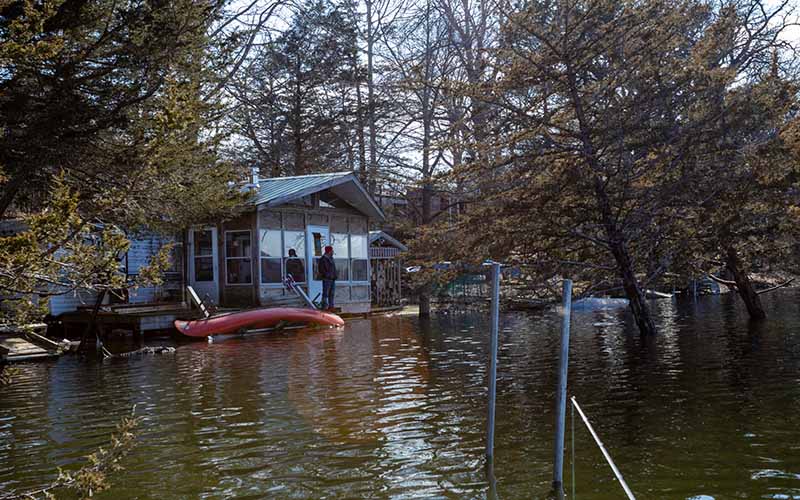
The health impacts of climate change are not felt equally by all. Groups more at risk include communities of color, children and pregnant women, the elderly, immigrant groups, Tribal nations, certain occupational groups, lower-income households, and people living with disabilities or chronic diseases.
The health disparities experienced from climate change are environmental and climate justice issues. The Human Health Working Group is exploring many ways in which environmental and climate injustices harm people’s health, including:
- Heat-related illnesses and deaths will be felt disproportionately by communities located in heat islands. A 2020 analysis of U.S. cities found that discriminatory housing and planning policies played a significant role in how heat islands occur in predominantly low-income and communities of color. The heat island effect is often compounded in low income communities with poor housing conditions and lack of air conditioning.
- Formerly “redlined” areas are at greater risk from flooding compared to non-redlined areas.
- A warmer and wetter climate can stress food production processes across the state. Rural counties in Wisconsin often have less resources to combat food insecurity as a result of climate change. Food insecurity is associated with high blood pressure, diabetes, high cholesterol, heart disease, obesity, and mental health disorders.
Health policy changes need to include opportunities for the communities most impacted by climate change. Policy and planning change should happen on the local level and include health equity and resiliency principles during the planning and implementation process. The Human Health Working Group calls on decision-makers to consider mitigating these disproportionate impacts with improved climate action planning efforts.
Stories
Resources
- Wisconsin Department of Health Services: Climate and Health
- The Climate and Health Connection (pdf)
- Who's at Highest Risk for Heat? (pdf)
- Extreme Cold Brief (pdf)
- Lyme Disease (pdf)
- Heat Vulnerability Index
- Jonathan Patz's Aquatic Academy Spring 2020 Presentation
- Move Forward on Climate Change Op Ed
- Wisconsin Heat Vulnerability Index (pdf)
Our Team
Stakeholders and Partners
- Dane County Office of Energy and Climate Change
- Healthy Climate Wisconsin
- Heat Health Network – UniverCity Alliance
- Wisconsin Department of Natural Resources (DNR)
- Wisconsin Department of Health Services (DHS)
- Wisconsin Public Service Commission (PSC)
- Wisconsin Department of Agriculture, Trade, and Consumer Protection
- University of Wisconsin Extension
- Wisconsin Public Health Association (WPHA)
- Wisconsin Association of Local Health Departments and Boards (WALHDAB)
- Wisconsin Environmental Health Association (WEHA)
Members
- Kate Beardmore (co-chair), Climate and Health Program Manager, Wisconsin Department of Health Services, katharine.beardmore@dhs.wisconsin.gov
- Jonathan Patz (co-chair), Vilas Distinguished Achievement Professor and John P. Holton Chair of Health and the Environment, Nelson Institute for Environmental Studies and Department of Population Health Sciences, UW-Madison, patz@wisc.edu
- Jim Boulter, Professor, Public Health and Environmental Studies Program/Chemistry and Biochemistry, UW-Eau Claire
- Megan Christenson, Epidemiologist, Climate and Health Program and Environmental Public Health Tracking Program, Wisconsin Department of Health Services
- Sheena Cook-Fuglsang, Regional Community Health Coordinator (Southwestern Wisconsin), UW-Madison Division of Extension
- Michael Kamp, Outreach and Development Specialist, Center for Sustainability and the Global Environment, UW-Madison
- Pearly Wong, Regional Community Health Coordinator (Northeastern Wisconsin), UW-Madison Division of Extension

